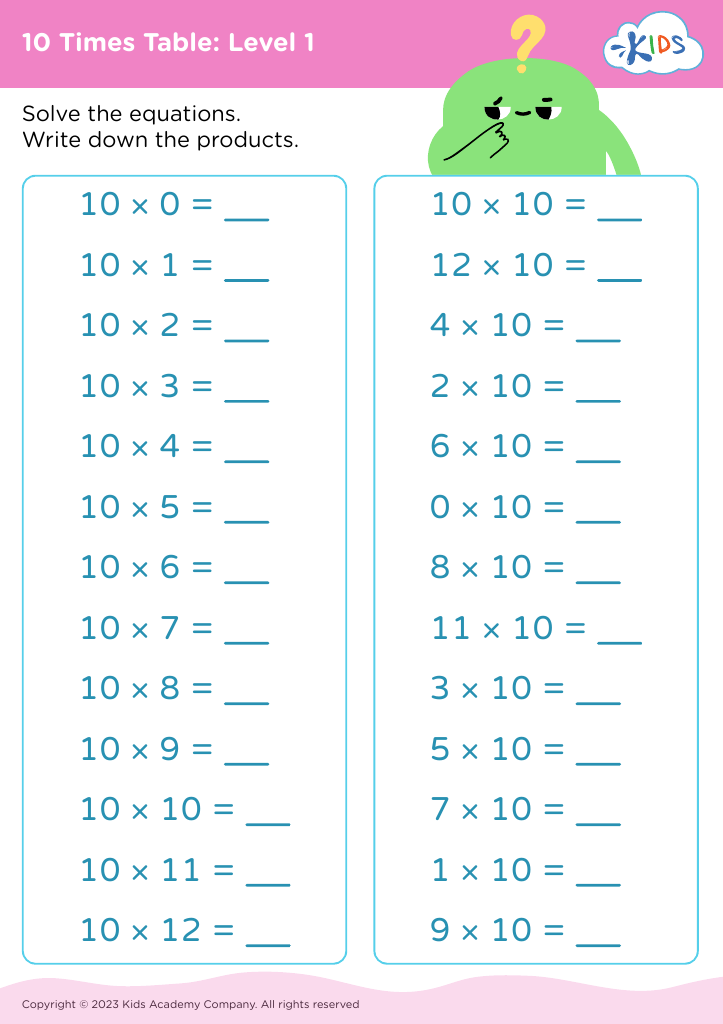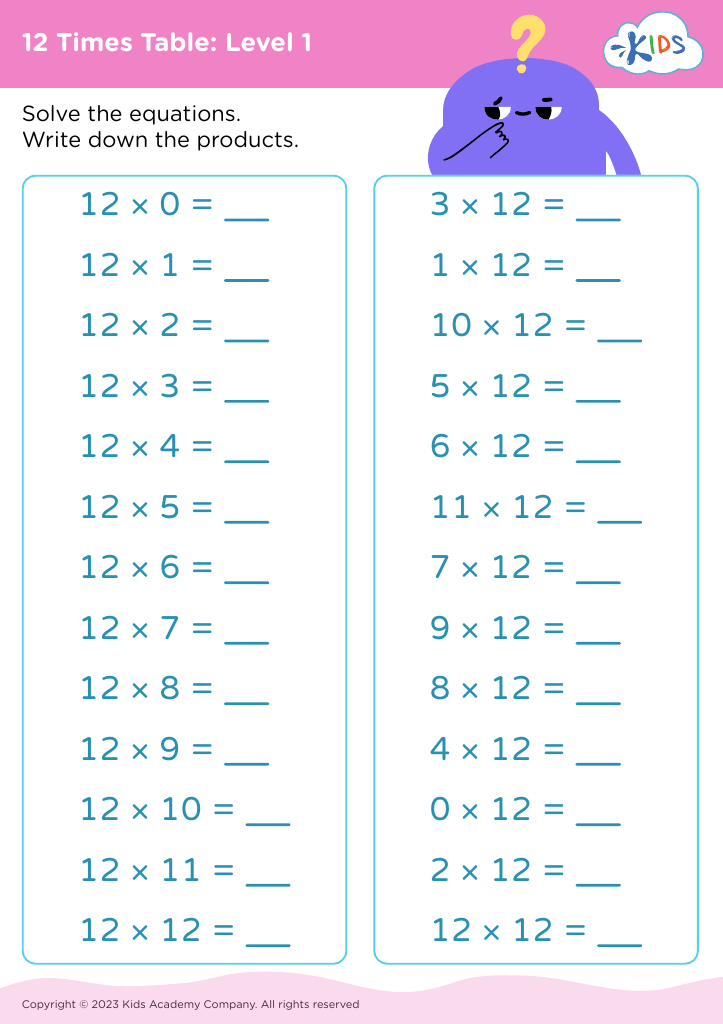Understanding patterns Basic Times Tables up to 12 Worksheets for Ages 7-8
3 filtered results
-
From - To
Discover engaging worksheets designed to help children ages 7-8 master understanding patterns in basic times tables up to 12. Our resources focus on developing essential math skills through fun and interactive activities. By recognizing patterns within multiplication, kids will enhance their number sense, boost their confidence, and lay a strong foundation for future math success. Each worksheet offers a variety of exercises that make learning enjoyable, allowing children to explore multiplication through visual aids, real-world applications, and repetition. Empower your child to enjoy math as they embark on their journey of mastering times tables with our thoughtfully crafted worksheets!
Understanding patterns in basic times tables up to 12 is foundational for children aged 7-8, and both parents and teachers should prioritize this learning. This age marks a crucial transition where children begin to grasp multiplication concepts, moving beyond simple addition. Recognizing patterns in times tables fosters critical thinking and enhances their mathematical reasoning skills. For instance, observing how multiples of 5 end in 0 or 5 can simplify calculations and build confidence.
Moreover, a solid understanding of multiplication sets the stage for success in more advanced math concepts, including division, fractions, and problem-solving. When children see the relationships between numbers, they can predict outcomes, making them more independent learners. Parents and teachers can leverage daily activities, games, and visual aids to reinforce these patterns, transforming abstract concepts into relatable knowledge.
Additionally, mastering basic times tables positively impacts a child’s overall academic performance and reduces math anxiety. It equips children with lifelong skills they will encounter in various real-world situations—like budgeting or cooking. Ultimately, by focusing on patterns in multiplication, parents and teachers empower children to build a strong mathematical foundation, paving the way for future success in academia and beyond.


















